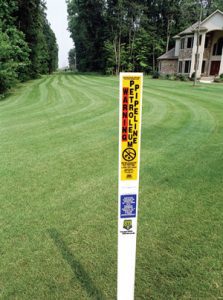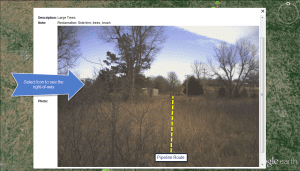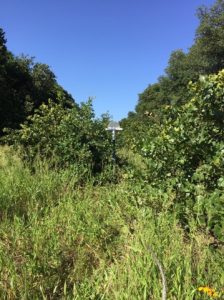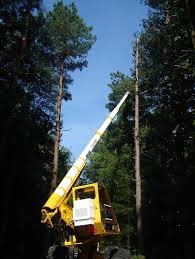Best Practices for a Right-of-Way Maintenance Program
The Pipeline and Hazardous Materials Safety Administration (“PHMSA”) holds ultimate authority for interstate pipeline compliance in the United States (similar to the way that the IRS oversees tax compliance). As such, their guidance on how to manage a right-of-way maintenance program carries some weight. An operator would not want to find itself in the middle of an enforcement action — or any manner of civil litigation — and learn that its maintenance program ran afoul of very clear regulatory guidance.
The Baseline Recommended Practice #12, which is worth reading in its entirety, contains some helpful direction — and some very clear warnings — for transmission line operators. In an attempt to summarize their suggestions, we will distil the guidance into five main points:
Baseline Obligation
Compliance professionals will tell you that when it comes to regulatory guidance, companies need to pay careful attention to words of obligation. Words like “may,” “could,” and “should” signal suggestions as to prudent options or even discretionary best practices. But words like “must” and “shall” are far more serious. They trigger an uncompromising standard of duty. For example, consider the opening paragraph of BL12:
“After a transmission pipeline is installed, the pipeline right-of-way (ROW) must be maintained by the pipeline operator to allow for inspection of surface conditions as required by federal law. The transmission pipeline operator must maintain the ROW vegetation so that it will not hinder pipeline inspection and maintenance activities.” (emphasis added)
While it’s sometimes easy to subordinate vegetation management to other maintenance needs on the pipeline (particularly during seasons of < $40 oil), PHMSA makes it abundantly clear that this task is not optional. When the first two sentences of a regulatory document use language of obligation three times, the agency sends a clear signal that it expects companies to comply.

Observation of Surface Conditions
Next, in an apparent effort to provide the rationale for such rigid maintenance standards, PHMSA reminds operators exactly why keeping rights-of-way clear and low-cut makes sense for their overall business.
“The transmission pipeline right-of-way must be maintained in order to facilitate the identification of surface conditions such as:
- Unauthorized activities on or near the right-of way
- Heavy equipment on the right-of-way without authorization
- Urban encroachment
- Construction activities on or near the right-of-way
- Soil defects
- Erosion at water crossings, flooding on the right-of-way or sedimentation in streams
- Damage to company property
- Missing or moved aerial markers, pipeline line markers or identification signs
- Evidence of leaking gas or liquid” (emphasis added)
Regular and vigilant observation of surface conditions represents one of the easiest and most cost-effective ways to prevent major incidents on a pipeline. And the only way to reasonably undertake that kind of observation is to keep the right-of-way clear and easily visible — both from the sky and with a clear line of sight from the ground.

Public Safety
Another important reason — perhaps the most important reason — for operators to keep rights-of-way continually maintained is that of public safety.
“A transmission pipeline ROW that is adequately maintained free of obstructions is an important visual indicator of the existence of transmission pipeline facilities for anyone performing construction or other work near the pipeline. Third-party incidents are a leading cause of damage to transmission pipelines and often occur when excavation or other construction activity occurs near the pipeline and the pipe is accidentally struck.
If pipeline damage occurs, the pipeline operator may need direct and immediate access to the pipeline and this will be facilitated by an adequately maintained ROW. In the event of an emergency, a clear ROW is necessary to facilitate access by both the pipeline operator and emergency response personnel. Obstructions on the ROW can prohibit their ability to respond.” (emphasis added)
But even beyond the principle of safety lies a more pragmatic reason to comply with this guidance: liability management. When people or property incur injury or damage, lawsuits often follow. Many times, those suits turn on the concept of negligence. Negligence lawsuits typically require plaintiffs to prove that the defendant violated some duty of reasonable care. But there exists an important exception to the ordinary negligence doctrine that makes a plaintiff’s case much easier to prove.
The concept of “negligence per se” essentially says that if a defendant violates a statute, rule, or regulation — and harm results that the regulation was designed to prevent — then the regulatory violation simultaneously constitutes a violation of reasonable care owed to the plaintiff. (See Carter v. William Sommerville and Son, Inc., 584 S.W.2d 274, 278 (Tex. 1979). See also, Air Products & Chemicals Inc. v. Odfjell Seachem (Tex.App.- Houston [1st Dist.] Aug. 27, 2009)). In short, if an operator fails to maintain its rights-of-way in accordance with the PHMSA regulations, it will substantially weaken its defense in any resulting litigation.

Frequency of Surface Inspection
When considering a right-of-way maintenance program, frequency and schedule should factor in heavily. A once-well-groomed right-of-way does little good if it’s neglected and overgrown when the time comes to inspect it. In other words, the schedule must be regularly maintained. And here again, PHMSA utilizes clear language of obligation.
“According to pipeline safety regulations, transmission pipeline operators must have a patrol program to inspect and observe surface conditions on and adjacent to the transmission line right-of-way for indications of leaks, construction activity, and other factors affecting safety and operation. While an operator may choose to perform inspections more frequently, hazardous liquid transmission pipeline operators must inspect 26 times a year at an interval that does not exceed 21 days. Natural gas transmission pipeline operators must inspect 1 to 4 times a year at an interval that does not exceed 4.5 to 15 months, depending on the population density near the pipeline. The pipeline ROW should be maintained at a frequency that allows the operator to inspect surface conditions at the minimum required inspection intervals.” (emphasis added)
Removal of Encumbrances
Finally, the agency addresses perhaps the most insidious of right-of-way maintenance dangers: those not easily seen from the ground. Namely, tree canopies that obscure the view of aerial patrols and root systems that encroach and endanger the pipeline itself.
“Side trimming of the tree canopy may be necessary for aerial surveillance to be effectively performed. . . . Trees should not be allowed within the boundary of the ROW. Tree roots have the potential to damage pipeline coatings which may contribute to the loss of integrity of the pipeline.”
Canopy trimming is relatively simple to understand, but it often requires specialized equipment that is difficult for operators to secure. And root systems, when left unchecked, can cause serious problems.
Before After Equipment



Let Us Help
There is some good news amidst all of this regulation — you don’t have to deal with it alone . Southern Brush specializes in right-of-way maintenance and can help operators create a fully-compliant schedule of services. Please email us today or complete the form below to set up an initial consultation.


